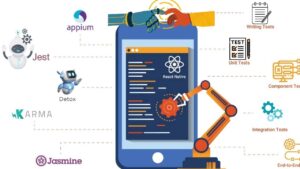Introduction
In today’s digital age, businesses are increasingly turning to cloud computing services to streamline operations, enhance scalability, and drive innovation. Cloud computing offers a flexible and cost-effective solution for storing, managing, and accessing data and applications over the internet. In this comprehensive guide, we’ll explore the various aspects of cloud computing services, from their benefits and types to key features and future trends.
Benefits of Cloud Computing Services
Cloud computing services offer a multitude of benefits for businesses of all sizes. From cost savings and scalability to enhanced collaboration and flexibility, the advantages are numerous. By leveraging cloud computing, organizations can reduce infrastructure costs, improve accessibility, and increase efficiency.
Cost Efficiency:
- Reduced Capital Expenditure: Elimination of upfront investment in hardware and infrastructure, leading to cost savings.
- Pay-Per-Use Model: Payment based on actual usage, allowing for better cost management and optimization.
- Economies of Scale: Access to scalable resources and shared infrastructure, resulting in lower operational costs.
Scalability and Flexibility:
- Elastic Computing: Ability to scale resources up or down based on demand, ensuring optimal performance and resource utilization.
- Rapid Provisioning: Instant access to computing resources, enabling businesses to quickly respond to changing requirements and market conditions.
- Geographic Expansion: Facilitation of business growth and expansion into new markets with minimal infrastructure investment.
Enhanced Performance and Accessibility:
- Global Reach: Access to cloud services from anywhere with an internet connection, enabling remote work and collaboration.
- Improved Performance: High-speed connectivity and low-latency access to applications and data, enhancing user experience and productivity.
- Redundancy and Reliability: Built-in redundancy and failover mechanisms to ensure continuous availability and reliability of services.
Agility and Innovation:
- Faster Time-to-Market: Accelerated development and deployment of applications and services, enabling faster innovation and time-to-market.
- Experimentation and Iteration: Easy provisioning of resources for testing and experimentation, facilitating agile development and continuous improvement.
- Innovation Enablement: Access to cutting-edge technologies and services, such as AI, machine learning, and IoT, for driving innovation and competitive advantage.
Improved Collaboration and Mobility:
- Seamless Collaboration: Real-time collaboration and file sharing across distributed teams and locations, enhancing productivity and teamwork.
- Mobile Access: Anytime, anywhere access to applications and data from mobile devices, enabling flexibility and remote work capabilities.
- Version Control and Syncing: Centralized data storage and version control, ensuring consistency and synchronization across devices and users.
Security and Compliance:
- Enhanced Security Measures: Robust security features such as encryption, access controls, and identity management, ensuring data protection and privacy.
- Compliance Assurance: Compliance with industry regulations and standards, with built-in security controls and audit capabilities for regulatory compliance.
- Disaster Recovery and Business Continuity: Automated backup and disaster recovery solutions, minimizing downtime and data loss in the event of disasters or outages.
Environmental Sustainability:
- Energy Efficiency: Optimization of resource utilization and energy consumption, reducing carbon footprint and environmental impact.
- Green Initiatives: Adoption of eco-friendly practices and technologies, such as renewable energy sources and energy-efficient data centers, to promote sustainability.
By leveraging these benefits of cloud computing services, businesses can transform their operations, drive innovation, and achieve competitive advantage in today’s digital economy.
Types of Cloud Computing Services
There are several types of cloud computing services, each catering to different needs and requirements.
Type of Service | Description |
Infrastructure as a Service (IaaS) | Provides virtualized computing resources over the internet, including servers, storage, and networking. Users can deploy and manage their own operating systems and applications. |
Platform as a Service (PaaS) | Offers a platform for developing, testing, and deploying applications without the need to manage underlying infrastructure. Developers can focus on coding and application logic while the platform handles scalability, security, and maintenance. |
Software as a Service (SaaS) | Delivers software applications over the internet on a subscription basis, eliminating the need for users to install, maintain, and update software locally. Applications are accessible via web browsers or APIs. |
Function as a Service (FaaS) | Also known as serverless computing, FaaS allows developers to execute code in response to events without managing servers or infrastructure. Developers can focus on writing functions, and the cloud provider handles scaling and execution. |
| Container as a Service (CaaS) | Offers a container-based environment for deploying, managing, and scaling containerized applications. CaaS platforms abstract underlying infrastructure and provide tools for orchestrating and managing containers. |
| Database as a Service (DBaaS) | Provides managed database services over the cloud, allowing users to deploy, operate, and scale databases without managing underlying infrastructure. DBaaS offerings include relational, NoSQL, and data warehouse databases. |
Backend as a Service (BaaS) | Offers pre-built backend services for mobile and web applications, including authentication, data storage, push notifications, and serverless functions. BaaS platforms simplify backend development and integration, allowing developers to focus on frontend functionality. |
Network as a Service (NaaS) | Provides network infrastructure and services over the cloud, including virtualized network functions, connectivity, and security services. NaaS offerings enable flexible, scalable, and on-demand network provisioning and management. |
Security as a Service (SECaaS) | Delivers security services and capabilities over the cloud, including threat detection, intrusion prevention, encryption, and identity and access management. SECaaS offerings help organizations enhance their security posture and protect against cyber threats. |
Key Features of Cloud Computing Services
Cloud computing services come with a range of features designed to meet the diverse needs of businesses. Here are some key features to consider:
- Elastic Computing: Ability to dynamically adjust computing resources based on demand, allowing for scalability and cost optimization.
- On-Demand Resource Provisioning: Instant access to computing resources such as servers, storage, and networking, eliminating the need for upfront investments in infrastructure.
- Automated Scaling: Automatic scaling of resources up or down in response to changing workload demands, ensuring optimal performance and cost-efficiency.
- Self-Service Capabilities: Empowerment of users to provision and manage resources independently through intuitive interfaces and APIs, promoting agility and efficiency.
- High Availability: Redundant infrastructure and failover mechanisms to ensure continuous availability of services and applications, minimizing downtime and disruptions.
- Data Redundancy and Replication: Built-in mechanisms for data redundancy and replication across multiple locations, enhancing data durability and reliability.
- Pay-Per-Use Pricing: Flexible pricing models based on actual usage, enabling organizations to pay only for the resources consumed, leading to cost savings and optimization.
- Scalable Storage: Ability to store and retrieve large volumes of data efficiently and cost-effectively, with options for both structured and unstructured data.
- Security and Compliance: Robust security measures such as encryption, access controls, and compliance certifications to protect data and meet regulatory requirements.
- Integration and Interoperability: Seamless integration with existing systems and applications, as well as support for open standards and interoperability across heterogeneous environments.
- Monitoring and Management Tools: Comprehensive monitoring and management tools for tracking resource utilization, performance metrics, and compliance status, enabling proactive management and optimization.
- Disaster Recovery and Backup: Built-in disaster recovery capabilities and automated backup solutions to ensure business continuity and data protection in the event of unforeseen incidents.
By harnessing these key features, organizations can optimize their operations, improve agility, and drive innovation with cloud computing services.
Factors to Consider When Choosing Cloud Computing Services
When selecting cloud computing services, it’s essential to consider various factors such as security, reliability, performance, and compliance. By carefully evaluating these factors and aligning them with your business requirements, you can make informed decisions and choose the right cloud solution for your organization.
| Cloud Service Provider | Description | Key Features | Pricing |
| Amazon Web Services (AWS) | Leading cloud provider with a wide range of services and global infrastructure. | Scalability, reliability, security, and extensive service catalog. | Pay-as-you-go pricing model based on usage. |
| Microsoft Azure | Comprehensive cloud platform offering a variety of services and integration with Microsoft products. | Hybrid capabilities, AI and machine learning services, and robust security features. | Flexible pricing options, including pay-as-you-go and reserved instances. |
| Google Cloud Platform (GCP) | Google’s cloud offering with a focus on innovation and advanced technologies. | Big data and analytics tools, machine learning capabilities, and global network infrastructure. | Competitive pricing with per-minute billing and sustained use discounts. |
| IBM Cloud | Enterprise-grade cloud platform with a focus on hybrid and multi-cloud environments. | AI-powered services, blockchain solutions, and industry-specific offerings. | Flexible pricing options, including pay-as-you-go and reserved instances. |
| Oracle Cloud | Cloud platform with a focus on enterprise applications and database solutions. | Integrated SaaS applications, autonomous database services, and robust security features. | Competitive pricing with predictable monthly costs and flexible licensing options. |
Security Considerations for Cloud Computing Services
Security is a top concern for organizations considering cloud computing services. From data breaches to unauthorized access, there are various security threats that must be addressed. Implementing robust security measures such as encryption, multi-factor authentication, and intrusion detection can help mitigate risks and protect sensitive information.
Future Trends in Cloud Computing Services
As the cloud computing landscape continues to evolve, several emerging trends are shaping the future of cloud services. Here are some key trends to watch out for:
Edge Computing Expansion
- Edge Computing Adoption: Increased adoption of edge computing architectures to bring processing closer to the data source, reducing latency and improving performance for real-time applications.
- Edge AI Integration: Integration of artificial intelligence (AI) capabilities at the edge to enable intelligent decision-making and automation in edge devices and sensors.
Serverless Computing Evolution
- Serverless Architecture Growth: Continued growth of serverless computing models, allowing developers to focus on building and deploying applications without managing underlying infrastructure.
- Hybrid Cloud Serverless: Emergence of hybrid cloud serverless solutions, enabling seamless integration between on-premises and cloud environments for greater flexibility and scalability.
Multi-Cloud and Hybrid Cloud Adoption
- Multi-Cloud Strategies: Increasing adoption of multi-cloud strategies to leverage the strengths of different cloud providers, mitigate vendor lock-in, and optimize costs.
- Hybrid Cloud Expansion: Continued expansion of hybrid cloud deployments, combining public and private cloud resources to meet specific workload requirements and regulatory compliance needs.
Quantum Computing Advancements
- Quantum Computing Applications: Exploration of quantum computing applications in areas such as cryptography, optimization, and machine learning, unlocking new possibilities for solving complex problems.
- Quantum-Safe Security: Development of quantum-safe encryption algorithms and security protocols to protect sensitive data and communications in anticipation of quantum computing breakthroughs.
Cloud-Native Technologies
- Cloud-Native Adoption: Accelerated adoption of cloud-native technologies such as containers, microservices, and Kubernetes orchestration for building and deploying scalable, resilient, and portable applications.
- Serverless Containers: Emergence of serverless container platforms that combine the benefits of containerization with the simplicity and scalability of serverless computing.
AI and Machine Learning Integration
- AI-Powered Cloud Services: Integration of artificial intelligence (AI) and machine learning (ML) capabilities into cloud services to enhance automation, analytics, and decision-making across various domains.
- AutoML and AIaaS: Rise of AutoML (Automated Machine Learning) platforms and AI as a Service (AIaaS) offerings, democratizing access to AI and ML tools for developers and businesses.
Green Cloud Computing Initiatives
- Sustainable Cloud Practices: Growing focus on sustainability and environmental responsibility in cloud computing, with efforts to optimize energy efficiency, reduce carbon footprint, and promote renewable energy usage.
- Green Data Centers: Development of energy-efficient data center technologies and green data center initiatives to minimize environmental impact and support eco-friendly cloud infrastructure.
Blockchain Integration
- Blockchain-Based Solutions: Integration of blockchain technology into cloud services for enhanced security, transparency, and decentralization in areas such as supply chain management, identity verification, and smart contracts.
- Blockchain Cloud Platforms: Development of blockchain cloud platforms and services to simplify the deployment and management of blockchain networks and applications.
By staying abreast of these future trends in cloud computing services, organizations can anticipate changes, capitalize on emerging opportunities, and stay ahead of the curve in their cloud adoption journey.
Conclusion
Cloud computing services offer a wealth of opportunities for businesses seeking to modernize their IT infrastructure and drive digital transformation. By understanding the benefits, types, and key considerations of cloud computing, organizations can make informed decisions and unlock new possibilities for innovation and growth. As the cloud computing market continues to evolve, staying informed and adapting to emerging trends will be key to success.








